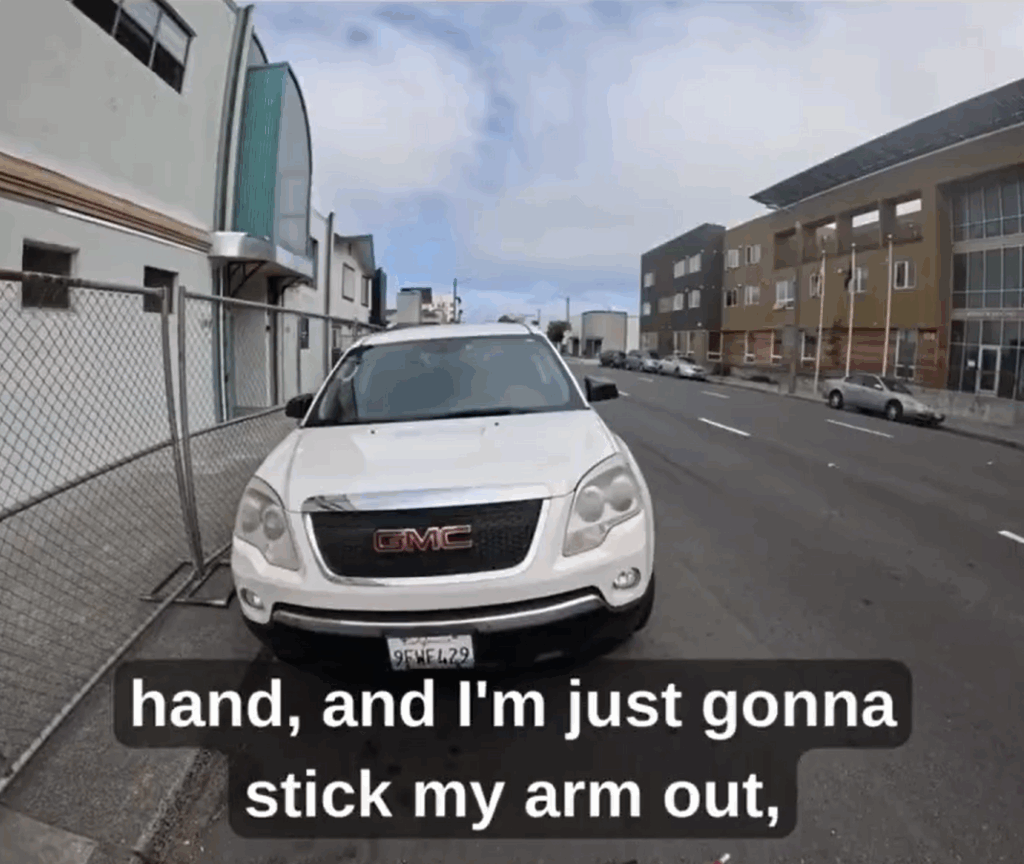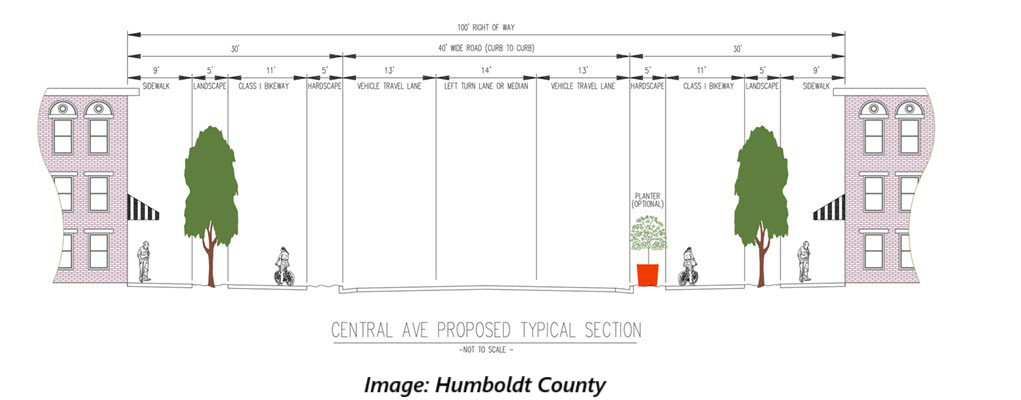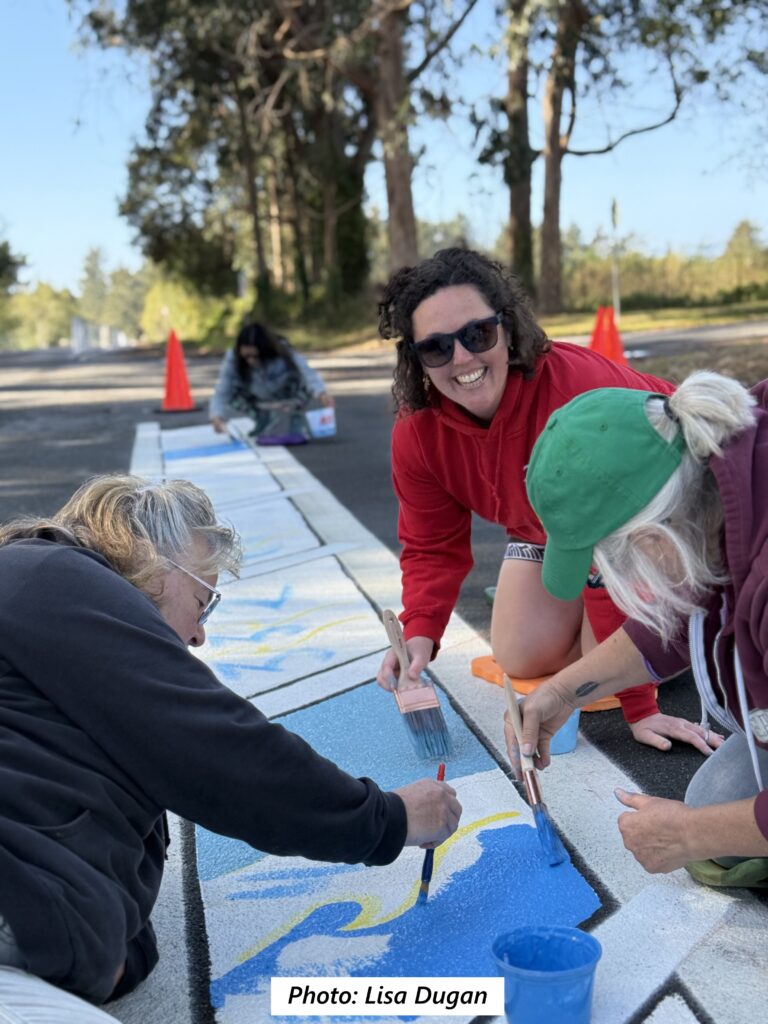The Collector
October 24, 2025
Dangerous Downtown Streets: Accessibility Expert Crosses 4th Street
Recently, accessibility expert and CRTP Board member Peggy Martinez was kind enough to put on a camera and document a little bit of what it’s like to navigate Eureka’s 4th and 5th Streets (US-101) as a blind person. One of the results is this video, which begins at 4th & B Streets and lasts for the full ten minutes it took just to get to a safe crossing point and get across the street! You can also click here to watch all the other point-of-view videos we’ve produced documenting the experiences of pedestrians and bicyclists in the 4th & 5th Street corridor.
After you watch, click here to read our full 4th and 5th Street safety report. And if you’d like to report a safety concern in the corridor to Caltrans, click here and scroll down to “Safety Concern” in the “Situation Type” menu. We also encourage everyone to continue making Street Story reports, so that concerns are publicly documented.
McKinleyville Town Center Ordinance Approved!
On Monday, the Humboldt County Board of Supervisors approved the McKinleyville Town Center ordinance, including a Central Avenue safety redesign! We’re grateful to the McKinleyville Municipal Advisory Committee and many others for their hard work on this ordinance over the last 6 years.
We’re especially grateful to all of CRTP’s members and supporters who participated in this process. Our collective education and advocacy efforts ensured that the future Town Center will be more walkable and bikeable in all sorts of ways, including:
- Future homes will be built more densely and mixed with commercial and civic space, putting more destinations within walking distance.
- Instead of buildings set back behind massive parking lots, parking will be limited and located in shared lots behind buildings, and buildings will feature pedestrian-friendly frontage designs.
- A transit center will eventually be built, along with a network of paved trails and car-free spaces.
- Two lanes of Central Avenue will be repurposed for protected bike lanes, dramatically increasing safety and comfort for people walking, biking, and rolling. New sidewalks, landscaping, and traffic calming features will also be added.
- Protected bikeways, sidewalks, landscaping, and traffic calming features will be added to Hiller Road.
This is a major milestone in the history of Humboldt County’s third largest community. We’re excited to see the Town Center take shape in the years to come!
Hiller Road Quick-Build Safety Improvements Taking Shape
The Hiller Road quick-build safety project is under way, with protected bike lanes almost complete between Central Avenue and McKinleyville Avenue. Last weekend, local mural artists and community volunteers created beautiful asphalt art in the bike lane buffers and other available spaces. Changes to the intersection of McKinleyville Avenue and Hiller Road are expected soon, along with another mural.
While the county is paying for the road improvements, the mural expenses are being funded entirely from crowdfunded donations. Money is still needed to make sure the mural artists are compensated fairly for their work! Click here to donate.
Obscure But Important Rule Adopted by Humboldt Supervisors
The California Environmental Quality Act (CEQA) requires the transportation impacts of new development projects to be assessed in terms of how much they increase or decrease people’s driving, a measurement transportation nerds call vehicle miles traveled, or VMT. But until this week, Humboldt County had no standard for determining when a change in VMT was “significant.” On Tuesday, the Board of Supervisors adopted an official rule: transportation impacts of a development will be deemed significant if future residents or employees can be expected to drive 85% or more of the current average for all other county residents.
CRTP had asked for a significance threshold set at 75% of average, because California’s statewide climate plan requires a 25% reduction in VMT. We also advocated for setting separate baselines for urban and rural parts of the county, because people have such different driving habits in these areas. We’re disappointed the Supervisors didn’t take up these suggestions. But we’re grateful that they rejected the other option under consideration, which was to exclude residents of the county’s towns and cities – who generally drive less – from the calculation. Doing that would have resulted in an artificially high threshold.
If your eyes have glazed over at this point, here’s why this is important: When an impact is “significant” under CEQA, the law requires a project to adopt mitigation measures to reduce the impact. And when it comes to VMT, mitigation measures include things like bike and pedestrian infrastructure and improved transit service. In other words, the new significance threshold will have a big impact on future funding for safe, sustainable, and equitable transportation improvements in the county.
Eureka C Street Bike Boulevard Getting Closer to Completion
This week, the City of Eureka took the next steps toward completion of the C Street Bike Boulevard by designating certain blocks as one-way and changing some intersection configurations. The new bike boulevard features pairs of one-way streets in opposite directions, but allows two-way bike travel the whole way. The opposing one-way streets are an important design feature that reduces the amount and speed of car traffic, making biking safer while still preserving local car access.
The bike boulevard was funded by a $2.2 million state grant from the highly competitive and chronically underfunded Action Transportation Program. Meanwhile, Caltrans just announced more than a hundred million dollars in new state and federal funding for repairs and other projects on the state highway system on the North Coast. We’d never suggest that there aren’t urgently needed repairs on the state highway system, but there is an ongoing and striking funding discrepancy between safety projects – especially for people walking and biking – and projects to maintain and enhance highways for vehicles.
More Reflections on the Week Without Driving
The latest episode of the EcoNews Report features EPIC Executive Director Tom Wheeler, CRTP Executive Director Colin Fiske, and Humboldt County Supervisor Natalie Arroyo reflecting on experiences during this year’s Week Without Driving. Check it out!
News from Beyond the North Coast
CalBike Tackles the E-Bike Controversy
Here at CRTP, we’re big fans of e-bikes. They get people on bikes who otherwise wouldn’t or couldn’t bike, and they make it easier for people to replace car trips with bike trips. But just like any technology, e-bikes can be misused, and unfortunately a moral panic has developed in recent years about the supposed threats posed by speeding e-bikes. CalBike has now convened a statewide working group to study the issues around e-bikes and other electric mobility devices and make recommendations for policy solutions.
Why Do Fire Departments Block Street Safety Improvements?
It is all too common in the United States for fire departments to object to basic street safety interventions, from speed bumps to bike lanes. That’s despite the fact that car and truck crashes account for the large majority of incidents fire departments respond to in most areas. A new study reviews the reasons for these conflicts, and suggests some solutions.
The Collector is CRTP’s weekly transportation news roundup, published every Friday. We focus on North Coast news, but we also include relevant state, national and international transportation news – plus other items that we just find kind of interesting! To submit items for consideration, email colin@transportationpriorities.org.



